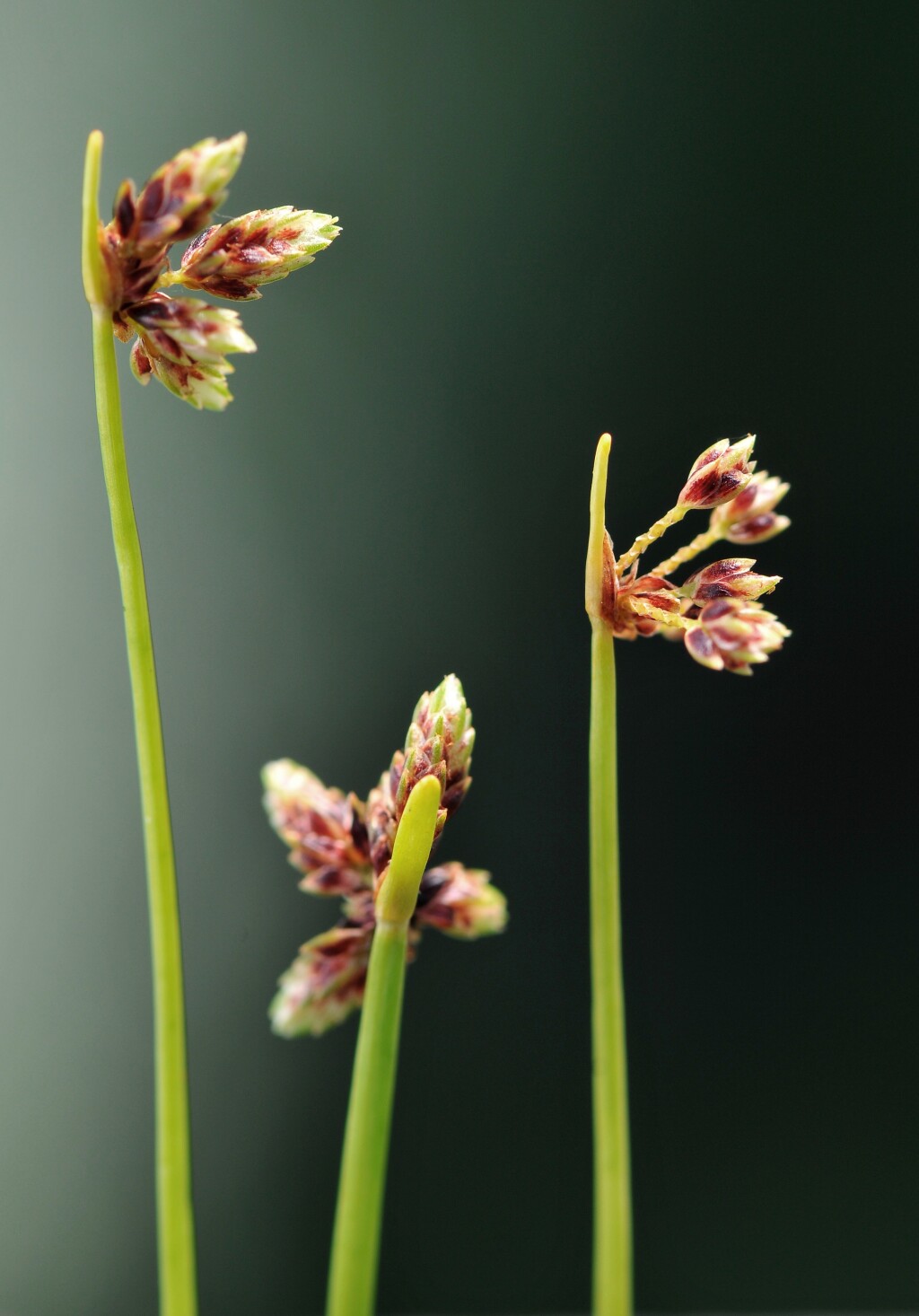Isolepis inundata
R.Br.Slender tufted or shortly rhizomatous perennial, often proliferating from the inflorescence. Culms 5–50 cm high, to 1.5 mm diam. Leaves reduced, or blade to 15 mm long. Inflorescence often proliferating. Spikelets 3–20 per inflorescence or rarely a solitary spikelet, 2–6 mm long; involucral bract equalling or exceeding spikelets, to 1.5 cm long; glumes obtuse to subacute, with sides irregularly 2–5-nerved, straw-coloured with often extensive dark red-brown to blackish patches on sides, 1.2–2 mm long; stamens 1 or rarely 2; style usually 3-fid. Nut unequally trigonous or rarely biconvex, angles well-defined, broad-obovoid to obovoid or broad-ellipsoid, minutely reticulate to minutely verrucose, glistening, pale yellow to pale red-brown, from one-half to two-thirds as long as glume, 0.7–1 mm long, 0.5–1.2 mm diam Flowers spring–summer.
LoM, MuM, Wim, GleP, Brid, VVP, VRiv, MuF, GipP, OtP, WaP, Gold, CVU, GGr, DunT, NIS, EGL, EGU, WPro, HSF, HNF, OtR, Strz, MonT, HFE, VAlp. All States except NT. New Zealand, Malesia, South America. A variable and adaptable species, occurring from brackish swamps near sea-level to shaded mountain gullies, mostly in the southern half of the State.
Wilson, K.L. (1994). Cyperaceae. In: Walsh, N.G.; Entwisle, T.J., Flora of Victoria Vol. 2, Ferns and Allied Plants, Conifers and Monocotyledons, pp. 238–356. Inkata Press, Melbourne.
 Spinning
Spinning



